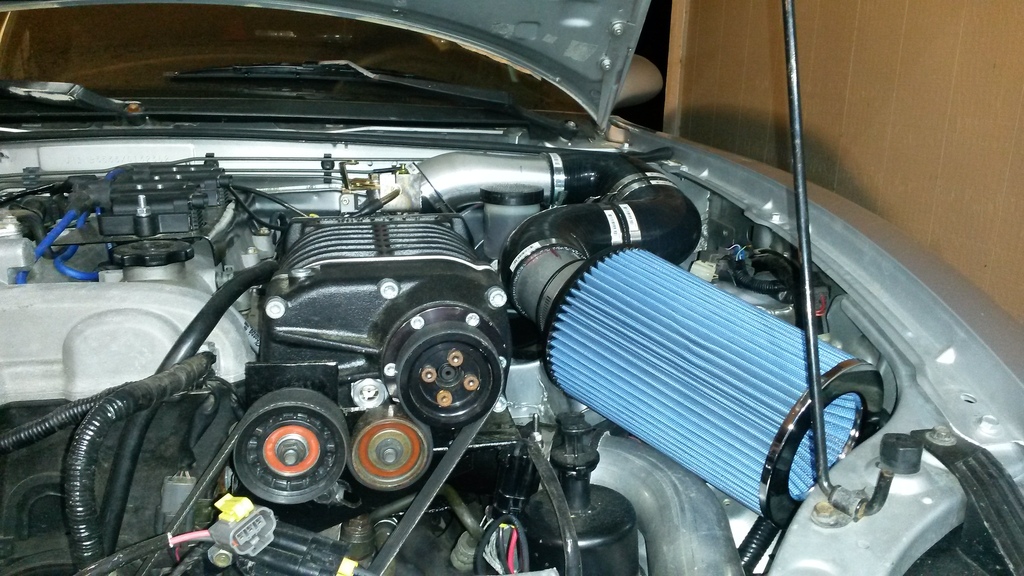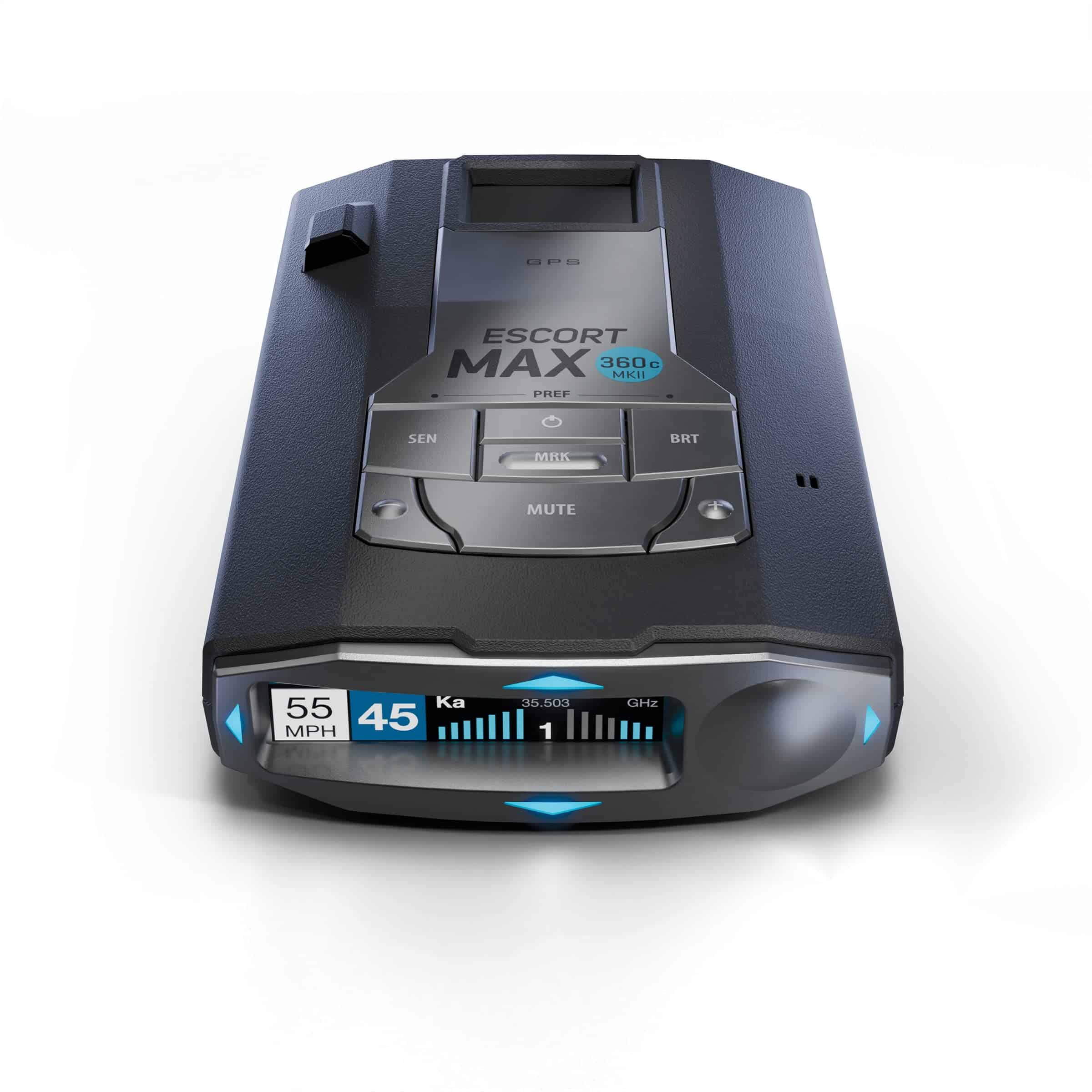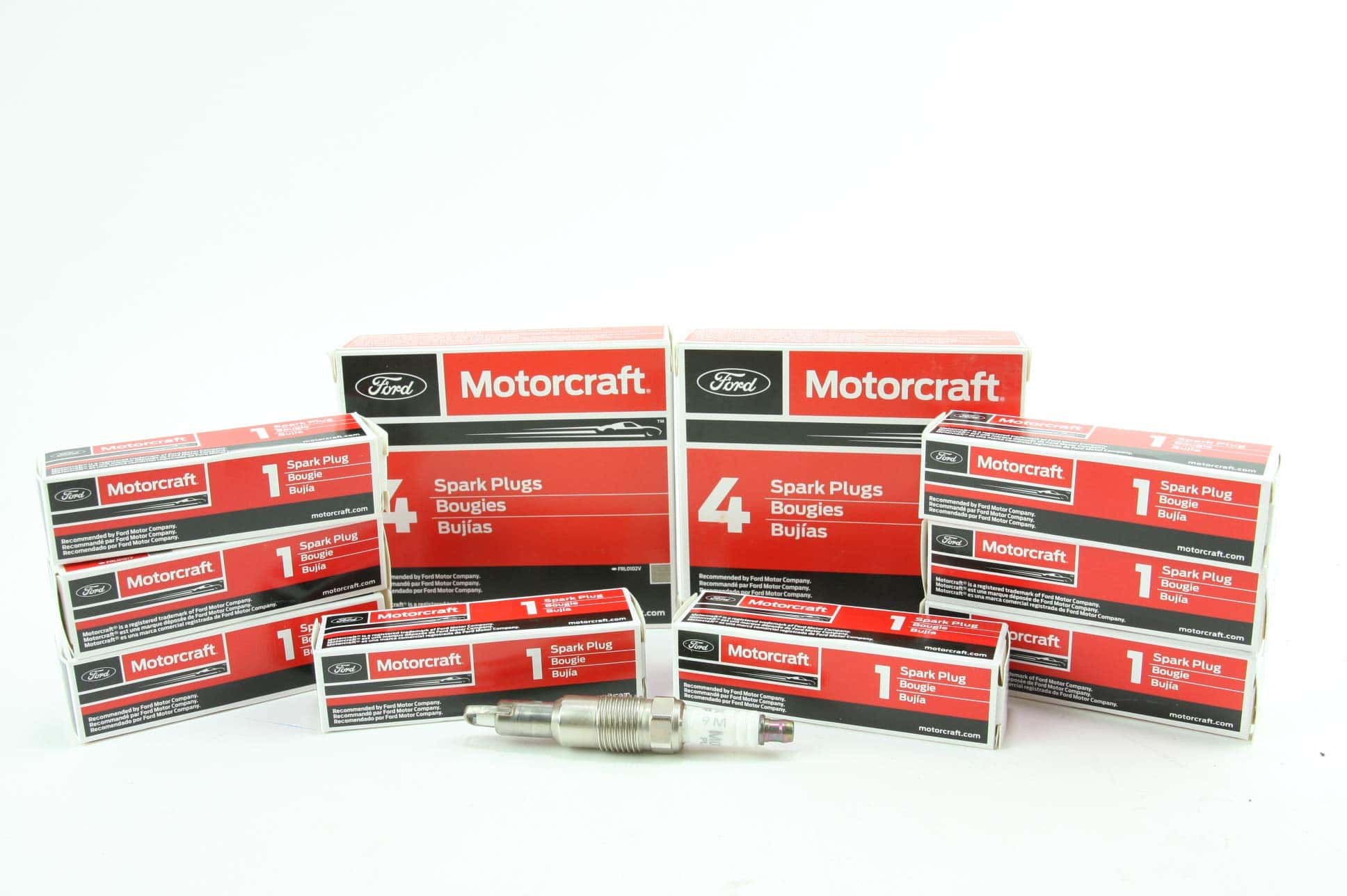Cold air intakes are a popular aftermarket modification for car enthusiasts looking to improve the performance and efficiency of their engines. There are two main types of cold air intakes: closed and open. Closed cold air intakes are fully enclosed with a sealed box, while open cold air intakes are open to the engine bay. Today we will uncover things that you need to know about Closed vs Open Cold Air Intake!
Understanding the differences between closed and open-air intakes is important when deciding which type to install in your vehicle. Closed cold air intakes are designed to seal out the hot air of the engine bay and ensure that the engine is getting the coolest air possible. On the other hand, open cold air intakes allow for more air to flow into the engine, which can result in increased horsepower and torque. However, open cold air intakes may also allow more hot air into the engine, which can decrease performance.
Key Takeaways:
- Closed and open-air cold intakes are the two main types of cold air intakes available for aftermarket installation in vehicles.
- Closed cold air intakes seal out hot air from the engine bay, while open cold air intakes allow for more air flow into the engine.
- The type of cold air intake chosen depends on a variety of factors, including performance goals, temperature and airflow considerations, and personal preferences.
Understanding Cold Air Intakes

The Role of Air Intake
The air intake system is a crucial component of an engine. It is responsible for supplying the engine with the air it needs to combust fuel and create power. The more air the engine can take in, the more fuel it can burn, and the more power it can produce. The air intake system also plays an important role in regulating the temperature of the air that enters the engine. Cold air is denser than hot air, which means it contains more oxygen. More oxygen means more power. So, the colder the air that enters the engine, the more power it can produce.
Cold Air Intakes Vs. Stock Air Intake
Stock air intakes are designed to be quiet and efficient. They are typically restrictive and are designed to keep the engine as quiet as possible. Cold air intakes, on the other hand, are designed to increase the amount of air that enters the engine. They are less restrictive and allow more air to flow into the engine. This increased airflow can result in more power and better performance.
Cold air intakes typically consist of an airbox, an air filter, and an intake tube. The air filter is designed to remove contaminants from the air before it enters the engine. The airbox is designed to protect the air filter from heat and moisture. The intake tube is designed to allow cold air to flow into the engine.
One of the main benefits of a cold air intake is that it can increase the amount of cold air that enters the engine. This can result in more power and better performance. However, it is important to note that not all cold air intakes are created equal. Some cold air intakes are designed to be loud and flashy, while others are designed to be quiet and efficient. It is important to choose a cold air intake that is designed to meet your specific needs.
In conclusion, the air intake system is a crucial component of an engine. Cold air intakes can increase the amount of air that enters the engine, resulting in more power and better performance. However, it is important to choose a cold air intake that is designed to meet your specific needs.
Closed Vs. Open Cold Air Intakes
When it comes to upgrading the performance of a car, the air intake system is one of the first things that comes to mind. There are two types of cold air intake systems: closed and open. While both types of intakes serve the same purpose, they differ in design and function. In this section, we will explore the concepts of closed and open cold air intakes.
Concept of Closed Cold Air Intake
A closed cold air intake system, also known as a closed box intake, is designed to isolate the air filter from the engine bay. The air filter is enclosed in a box, which is sealed off from the engine bay. This design prevents hot air from the engine from entering the intake system and provides a steady flow of cool air to the engine. The box is usually made of plastic or metal and is designed to fit the specific make and model of the car.
Closed box intakes are known to provide better performance gains than open intakes. According to Car Performance Boss, closed box intakes can provide an average gain of 5-10 horsepower. This is because the enclosed box protects the air filter from heating up, which can reduce the amount of air that enters the engine.
Concept of Open Cold Air Intake

When discussing air intake systems, the debate often comes down to open air intake vs cold air intake. An open cold air intake system, also known as an open box intake, is designed to allow air to flow freely into the engine. The air filter is usually located in a cone-shaped filter, which is mounted on top of the engine. This open design allows for a greater volume of air to enter the engine, which can increase performance.
However, when considering open air intake vs cold air intake, it’s worth noting that open box intakes are known to provide less performance gains than closed intakes. According to Mustang Addict, open box intakes provide fewer power gains than their closed counterparts. This performance difference arises because the open design allows hot air from the engine to enter the intake system, which can reduce the amount of cool air that enters the engine.
In summary, when comparing open air intake vs cold air intake, closed-cold-air intakes tend to provide better performance gains. Closed box intakes protect the air filter from heating up and ensure a steady flow of cool air to the engine. On the other hand, open box intakes allow for a greater volume of air to enter the engine but can also permit hot air from the engine to enter the intake system.
Closed intake vs open: Performance and Efficiency
When it comes to choosing between an open or closed cold air intake system, one of the most important factors to consider is performance and efficiency. Here are some key sub-sections to consider in more detail:
Power and Torque
Closed box air intake provides better performance than the open box counterpart. On average, you can gain 5-10 horsepower from a closed box cold air intake, whereas you can expect below 5 horsepower gain from an open cold air intake. The increased power and torque can be attributed to the fact that closed box air intakes are designed to reduce the amount of hot air that enters the engine. This results in a denser air charge, which leads to more power and torque.
Fuel Economy
In terms of fuel economy, a closed box cold air intake system is generally more efficient than an open box system. This is because the closed box system is designed to reduce the amount of hot air that enters the engine, resulting in a denser air charge that requires less fuel to combust. This means that you can expect to see an improvement in fuel economy, especially during highway driving conditions.
Engine Performance
In addition to power and torque gains, a closed box cold air intake system can also improve overall engine performance. By reducing the amount of hot air that enters the engine, a closed box system can help to prevent engine knock and detonation, which can cause damage to the engine over time. Additionally, a closed box system can help to reduce engine heat, which can also improve overall engine performance and longevity.
Overall, when it comes to performance and efficiency, a closed box cold air intake system is the clear winner. With increased power and torque, improved fuel economy, and better engine performance, a closed box system is the ideal choice for those looking to get the most out of their vehicle.
Temperature and Airflow
Effect of Air Temperature
Air temperature plays a crucial role in the performance of a cold air intake system. Cooler air is denser, which means it contains more oxygen molecules per unit volume. This, in turn, allows the engine to burn more fuel and produce more power. On the other hand, hot air is less dense and contains fewer oxygen molecules, leading to a decrease in engine performance.
Open-air intake systems tend to draw in warmer air from the engine bay, which can negatively impact engine performance. Closed box air intake systems, on the other hand, are designed to draw in cooler air from outside the engine bay, resulting in better engine performance.
Engine Heat
Another factor that affects air temperature is engine heat. As the engine runs, it generates heat, which can be transferred to the air intake system. This can cause the air entering the engine to become warmer, reducing engine performance.
Closed box air intake systems are designed to minimize the transfer of heat from the engine to the air intake system. The enclosed box protects the actual intake from the heat generated by the engine. On the other hand, open air intake systems are more susceptible to engine heat, which can negatively impact engine performance.
In summary, air temperature and engine heat play a significant role in the performance of cold air intake systems. Closed box air intake systems are designed to draw in cooler air from outside the engine bay and minimize the transfer of heat from the engine to the air intake system. This results in better engine performance compared to open air intake systems that tend to draw in warmer air from the engine bay and are more susceptible to engine heat.
Installation and Appearance
Installation Process
The installation process for open and closed cold air intake systems is generally straightforward and can be completed with basic tools. However, closed box systems may require more time and effort due to their more complex design. It is important to follow the manufacturer’s instructions carefully to ensure proper installation and optimal performance.
One of the main benefits of closed box systems is that they often come with a complete installation kit, which includes all the necessary hardware and instructions. This makes the installation process more straightforward and less time-consuming.
On the other hand, open systems may require more customization and modification, depending on the specific make and model of the vehicle. This can make the installation process more challenging and time-consuming.
Aesthetic Considerations
In terms of appearance, closed box systems are generally more attractive than open systems. The closed box design hides the air filter and other components from view, creating a cleaner and more streamlined look under the hood.
Open systems, on the other hand, can be more visually appealing for some car enthusiasts due to their exposed air filter and more aggressive appearance. However, they can also be less attractive due to the exposed components and the potential for dirt and debris to accumulate on the filter.
When it comes to choosing between closed and open cold air intake systems, it ultimately comes down to personal preference and the specific needs of the vehicle. Closed systems may be more attractive and easier to install, while open systems may provide a more aggressive appearance and potential performance gains.
Material and Brands
Material of Intakes
Cold air intakes can be made of different materials, including metal and plastic. Metal intakes are generally more durable and provide better heat dissipation, but they can be heavier and more expensive. Plastic intakes are lighter and less expensive, but they may not be as durable as their metal counterparts.
When choosing a cold air intake, it is important to consider the material and its impact on performance. For example, a metal intake may provide better airflow and horsepower gains, but it may also generate more heat and require more maintenance. On the other hand, a plastic intake may be easier to install and maintain, but it may not provide the same level of performance as a metal intake.
Popular Brands
There are many brands of cold air intakes available on the market, each with its own unique features and benefits. Some of the most popular brands include K&N and S&B Filters.
K&N is a well-known brand in the automotive industry, offering a wide range of high-performance air filters and intakes. Their cold air intakes are designed to improve horsepower and acceleration while providing superior filtration and protection for the engine.
S&B Filters is another popular brand that specializes in high-performance air filters and intakes. Their cold air intakes are designed to provide maximum airflow and filtration, while also reducing engine heat and improving throttle response.
Other factors to consider when choosing a cold air intake include the type of engine and exhaust system, as well as any other modifications that have been made, such as long-tube headers. It is important to choose a cold air intake that is compatible with the specific make and model of the vehicle, as well as any other modifications that have been made.
Other Considerations
When it comes to choosing between a closed and an open cold air intake, there are a few other considerations to keep in mind. Here are some factors to consider before making your final decision.
Price Factors
Price is always a consideration when making any purchase, and cold air intakes are no exception. Closed box intakes tend to be more expensive than open box intakes due to their more complex design and the additional components required for installation. However, this does not necessarily mean that closed box intakes are always better. It is important to weigh the price against the performance benefits before making a decision.
Sound and Noise Level
One of the biggest differences between closed and open box intakes is the sound they produce. Open-box intakes are known for producing a louder, more aggressive sound, which some drivers find appealing. Closed box intakes, on the other hand, tend to be quieter and produce a more subtle sound. If you are looking for a more aggressive sound, an open box intake may be the better choice. However, if you prefer a quieter ride, a closed box intake may be more suitable.
Recommendations
Ultimately, the choice between a closed and an open box intake depends on your personal preferences and driving style. If you are looking for maximum performance gains and don’t mind a louder sound, an open-box intake may be the way to go. However, if you prioritize a quieter ride and want to protect your engine from heat, a closed-box intake may be a better choice. It is also important to consider the specific make and model of your vehicle, as some vehicles may perform better with one type of intake over the other.
When it comes to choosing between a closed and an open cold air intake, it is important to do your research and weigh the pros and cons carefully. By considering factors such as price, sound, and recommendations, you can make an informed decision that meets your needs and helps you get the most out of your vehicle.
https://nashvilleperformance.com/cold-air-intake-sound/
Conclusion about closed intake vs open air intake
In conclusion, choosing between a closed and open cold air intake system depends on the specific needs and preferences of the vehicle owner. Both types have their advantages and disadvantages.
Closed air intake systems are generally more efficient in providing cooler air to the engine, resulting in improved horsepower and torque. They are also better at filtering out harmful particles from the air, which can prolong the life of the engine. However, they are typically more expensive and difficult to install.
On the other hand, open-air intake systems are more affordable and easier to install. They also provide a louder engine sound, which some vehicle owners may prefer. However, they are less efficient in cooling the air and may allow more harmful particles to enter the engine.
Ultimately, it is important for vehicle owners to consider their driving needs and budget when choosing between a closed and open-air intake system. It is also recommended to consult with a professional mechanic or experienced car enthusiast before making a final decision.





